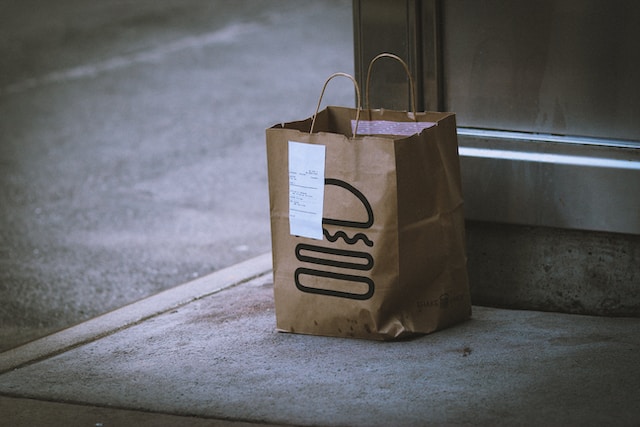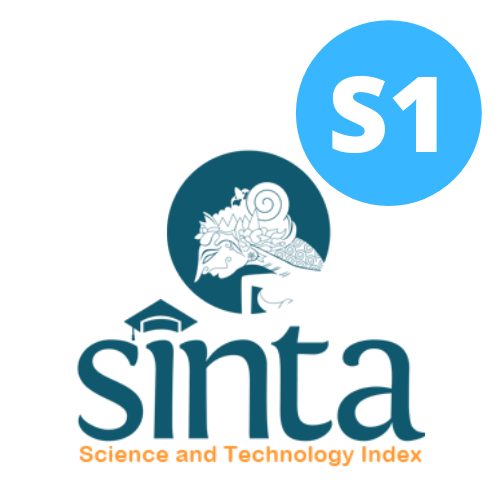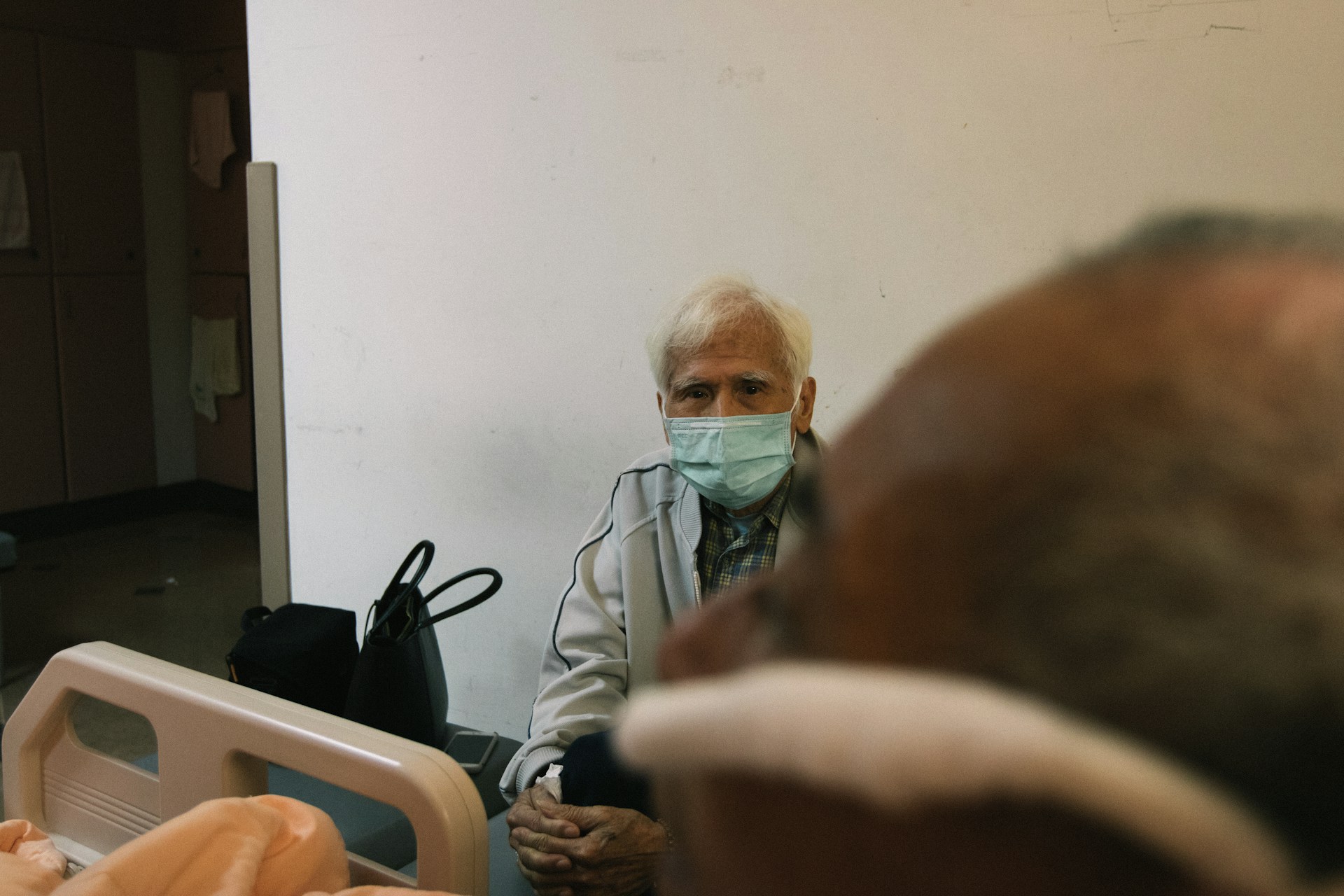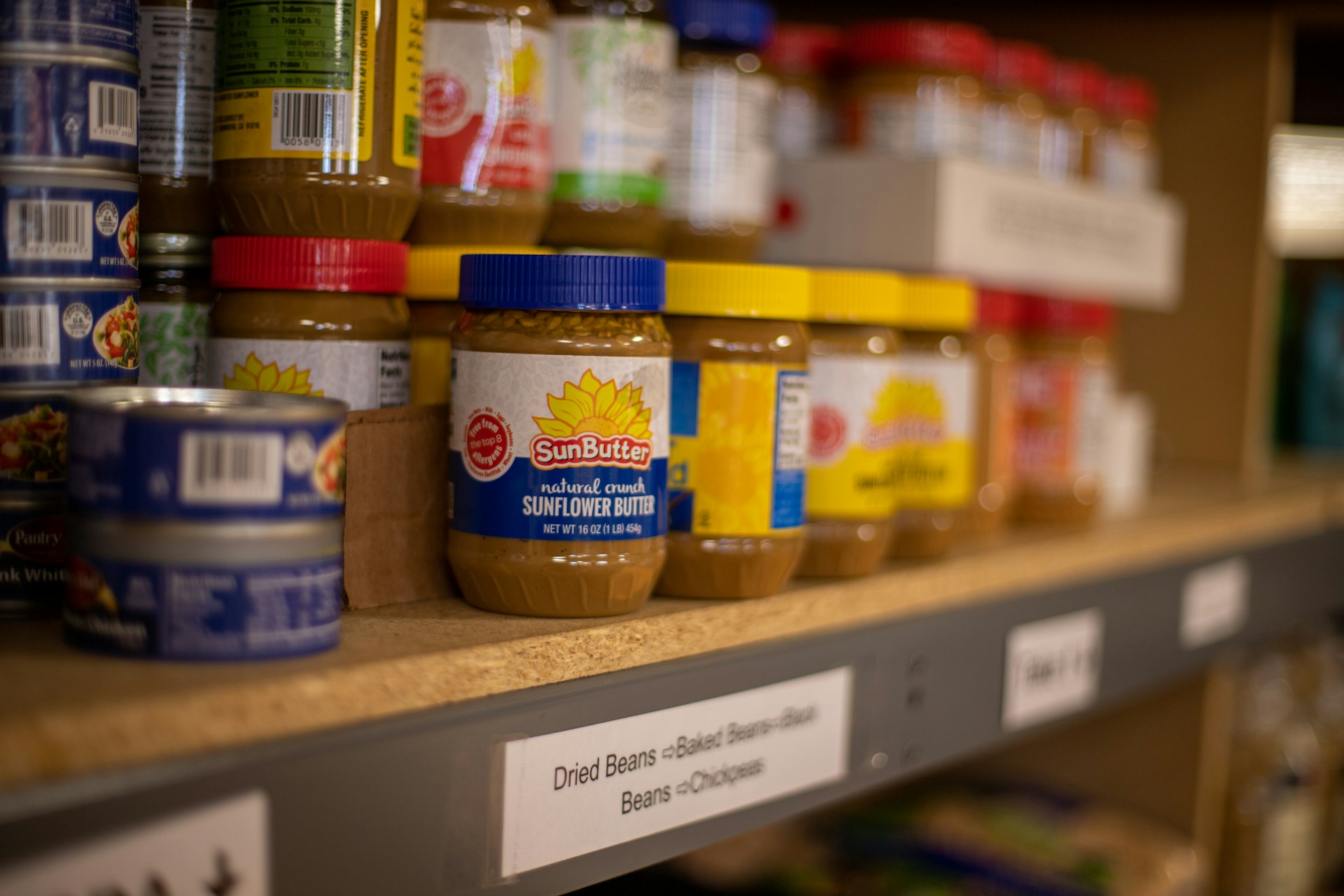The Relationship between the Use of Food Delivery Applications and the Risk of Obesity among Collage Students in the Jabodetabek Area
Hubungan Penggunaan Aplikasi Pesan Antar Makanan terhadap Risiko Obesitas pada Mahasiswa di Daerah Jabodetabek

Downloads
Background: The trend of using food delivery applications is currently popular with students because it makes it easier for them to get food. However, this can cause negative impacts such as changes in the variety, frequency, and amount of food consumed, thereby risking increasing the prevalence of obesity.
Objectives: This research aims to analyze the relationship between the use of food delivery applications, consisting of the frequency of use and the type of food/drink purchased, and the risk of obesity among students in the Jabodetabek area.
Methods: The research used a cross-sectional design with a sample of 73 students in the Jabodetabek area. A purposive sampling technique was employed. Data was collected through an online questionnaire containing respondent characteristics, application use, Food Frequency Questionnaire (FFQ), and risk of obesity.
Results: The food delivery application most frequently used by students was GoFood (42.5%). The majority of students used food delivery applications 1 – 3 times/week (94.5%). Meanwhile, coffee (27.4%) was the type of food/drink most often purchased through the application by students. Tests of the relationship between types of food/drinks and the risk of obesity showed several significant results, including fried chicken (p=0.03), baso aci (p=0.036), ice cream (p=0.018), and coffee (p=0.004). However, the test of the relationship between domicile and pocket money and the type of application used showed that the results were not significant with p=0.399 and p=0.163 respectively. The frequency of use of food delivery applications on the risk of obesity also did not show significant results (p=0.206).
Conclusions: Several types of food/drinks were related to the risk of obesity. Student residence and pocket money were not related to the type of application used, and the frequency of use of food delivery applications was also not related to the risk of obesity.
Danuri, M. Development and transformation of digital technology. Infokam XV, 116–123 (2019).
IÅ¡tvanić, M., Milic, D. C. & Krpic, Z. Digital Marketing in the Business Environment. Int. J. Electr. Comput. Eng. Syst. 8, 67–75 (2017).
Putri, A. Y. & Yendri, D. Sistem Pemesanan Makanan Dan Minuman Pada Restoran Menggunakan Teknologi NFC Berbasis Android. J. Inf. Technol. Comput. Eng. 2, 34–40 (2018).
Google, Temasek & Bain & Company. e-Conomy SEA 2021 Roaring 20s: The SEA Digital Decade. (2021).
Tenggara Strategics. Survei Persepsi & Perilaku Konsumsi Online Food Delivery (OFD) di Indonesia. TENGGARA Strategics (2022).
Kusuma, T. M. & Hermawan, D. Pengaruh Kualitas Pelayanan dan Social Influence Terhadap Keputusan Pembelian Menggunakan Online Food Delivery Service. J. Ekon. Manaj. Univ. Bina Sarana Inform. 18, 176–180 (2020).
Satrianugraha, M. D. Hubungan Intesitas Penggunaan Layanan Pesan Antar Terhadap Kejadian Gizi Lebih Pada Mahasiswa Kedokteran. J. Signal 10, 344 (2022).
Widyastuti, A. Dampak Food Delivery Terhadap Pola Makan Mahasiswa Perantau Di Kota Makassar. (Universitas Hasanudin, 2021).
Handayani, A. D. & Khomsan, A. Hubungan Intensitas Penggunaan Aplikasi Pesan Antar Makanan Secara Online dan Aktivitas Fisik Dengan Status Gizi Mahasiswa. 2, 1–8 (2022).
Netty, Jalpi, A. & Qariati, N. I. Hubungan Pengetahuan, Frekuensi Konsumsi Fast Food dan Genetik dengan Kejadian Obesitas Mahasiswa Fakultas Kesehatan Masyarakat Uniska MAB Banjarmasin. Promot. J. Kesehat. Masy. 12, 142–146 (2022).
Satrianugraha, M. D. & Sukmana, F. S. Fastfood dan Rendahnya Aktifitas Fisik Memicu Obesitas Central Pada Mahasiswa. Tunas Media J. Kedokt. Kesehat. 8, (2022).
Kementerian Kesehatan Republik Indonesia. Riset Dasar Kesehatan Tahun 2018. (2018).
Apriyani, A., Deniati, K. & Gea, N. Y. K. Hubungan Sedentary Lifestyle Dengan Risiko Obesitas Pada Mahasiswa Stikes Medistra Indonesia. J. Ilmu Kesehat. Mandira Cendikia 1, 1–8 (2022).
Obirikorang, C., Anto, E. O., Addai, P., Obirikorang, Y. & Acheampong, E. Prevalence and Risks Factors of Overweight/Obesity Among Undergraduate Students: An Institutional Based Cross-Sectional Study, Ghana. J. Med. Biomed. Sci. 6, 24–34 (2017).
Sumilat, D. D. & Fayasari, A. Hubungan Aktivitas Sedentari dengan Kejadian Gizi Lebih pada Mahasiswa Universitas Nasional. J. Pangan Kesehat. dan Gizi 1, 1–10 (2020).
Bhaskar, A. G. et al. Obesity Risk Assessment Concept. Diabetes Obes. Int. J. 6, 1–6 (2021).
Pakar Gizi Indonesia. Ilmu Gizi: Teori & Aplikasi. (Penerbit Buku Kedokteran EGC, 2016).
Fadila, R. ., Puspita, A. . & Nurjanah, S. Persepsi Mahasiswa Universitas Siliwangi Angkatan Tahun 2019 Pada Penggunaan Online Food Selama Pandemi Covid-19. J. Sist. Inf. dan Teknol. 5, 1–6 (2022).
Octaviani, F. L. & Cahyadi, E. R. Persaingan Platform Digital Layanan Pesan-Antar Makanan Di provinsi DKI Jakarta. J. Apl. Bisnis dan Manaj. 8, 973–984 (2022).
Puspita, M. & Aprilia, A. Faktor-Faktor Pendorong Konsumen Surabaya Membeli Makanan Dan Minuman Melalui Aplikasi Gofood Dan Grabfood. J. Manaj. Perhotelan 6, 88–98 (2020).
Razkia, A. Predisposing dan Enabling Factor dalam Menentukan Pola Konsumsi Modern Fast Food pada Pekerja Kantor Usia 18-35 Tahun di DKI Jakarta. Muhammadiyah J. Nutr. Food Sci. 3, 73 (2023).
Maretha, F. Y., Margawati, A., Wijayanti, H. S. & Dieny, F. F. Hubungan Penggunaan Aplikasi Pesan Antar Makanan Online Dengan Frekuensi Makan dan Kualitas Diet Mahasiswa. J. Nutr. Coll. 9, 160–168 (2020).
Salsabilla, N. & Wahyuningsih, U. Frekuensi Pembelian Makanan Online, Konsumsi Fast Food, dan Sedentary Lifestyle dengan Status Gizi Mahasiswa Gizi UPNVJ. J. Ilmu Gizi dan Diet. 2, 24–30 (2023).
Liveina & Artini, I. G. . Pola Konsumsi dan Efek Samping Meniman mengandung Kafein Pada Mahasiswa Program Studi Pendidikan Dokter Fakultas Kedokteran Universitas Udayanan. E-Jurnal Med. Udayana 3, 1–12 (2014).
Oktaria, S. Hubungan Antara Konsumsi Minuman Berkafein Dengan Pola Tidur Pada Mahasiswa Teknik. J. Kesehat. Masy. Gizi 1, 10–15 (2019).
Ilham, M. I., Haniarti & Usman. Hubungan Pola Konsumsi Kopi Terhadap Kejadian Gastristis Pada Mahasiswa Muhammadiyah Parepare. J. Ilm. Mns. Dan Kesehat. 2, 433–446 (2019).
Ranti, N. B. P., Boekoesoe, L. & Ahmad, Z. F. Kebiasaan Konsumsi Kopi, Penggunaan Gadget, Stress dan Hubungannya dengan Kejadian Insomnia pada Mahasiswa. Jambura J. Epidemiol. 1, 20–28 (2022).
Ranggayuni, E. & Aini, N. Faktor yang berhubungan dengan Konsumsi Makanan cepat Saji pada Mahasiswa di Institusi Kesehatan Helvetia Medan. JUMANTIK (Jurnal Ilm. Penelit. Kesehatan) 6, 278–284 (2021).
Nai, H. M. E. & Lubijarsih, M. A. Frequency of Online Food Ordering is Not Risk Factor of Central Obesity in Women Aged 20 - 49 years. J. Gizi dan Diet. Indones. (Indonesian J. Nutr. Diet. 9, 19 (2022).
Erdianti, N. P. Hubungan Pengaruh Teman Dengan Frekuensi Konsumsi Fast Food Modern Pada Mahasiswa Universitas XYZ Di Kota Depok. Edu Dharma J. J. Penelit. dan Pengabdi. Masy. 5, 8–15 (2021).
Zuhara, H., Hartono & Aprilia, H. D. Factors Which Affecting The Brandswitching Of Online Food Delivery Users. J. Kompetitif Bisnis 1, 669–680 (2022).
Faizah, F. N. & Zulfaturrohmaniyah. GoFood Vs ShopeeFood : Manakah yang Menjadi Pilihan Generasi Z ? Al -Tijary J. Ekon. dan Bisnis Islam 7, 157–168 (2022).
Pratiwi, P. R. & Arisena, G. M. K. Perilaku Konsumtif Belanja Kuliner Melalui Online Pada Mahasiswa Baru Fakultas Pertanian Universitas Udayanan Tahun 2022. AgriMu J. Sos. Ekon. Pertan. dan Agribisnis 3, 28–44 (2023).
Romadhoni, M. A. & Maika, M. R. Analisis Model Bisnis Berbasis Ekosistem Aplikasi Go-Jek Dalam Meningkatkan Kepuasan Dan Loyalitas Pelanggan. J. Saintekom 11, 74–86 (2021).
Kementerian Kesehatan Republik Indonesia. Factsheet Obesitas-Kit Informasi Obesitas. https://p2ptm.kemkes.go.id/dokumen-ptm/factsheet-obesitas-kit-informasi-obesitas (2018).
Kosnayani, A. S. & Aisyah, I. S. Faktor Risiko Yang Berhubungan Dengan Obesitas Remaja. Siliwangi 2, 128 (2016).
Rahmi, N., Zara, N. & Mardiati, M. Hubungan Pengetahuan Dan Kebiasaan Konsumsi Western Fast Food Dengan Status Gizi Pada Mahasiswa Universitas Malikussaleh. J. Kesehat. Almuslim 8, 11–17 (2022).
Larsen, S. C., í„ngquist, L., Sí¸rensen, T. I. A. & Heitmann, B. L. 24h Urinary Sodium Excretion and Subsequent Change in Weight, Waist Circumference and Body Composition. PLoS One 8, (2013).
Yi, S. S. & Kansagra, S. M. Associations of Sodium Intake with Obesity, Body Mass Index, Waist Circumference, and Weight. Am. J. Prev. Med. 46, 53–55 (2014).
Manja, P., Marlenywati & Mardjan. Hubungan Antara Konsumsi Kafein, Screen Time , Lama Tidur, Kebiasaan Olahraga dengan Obesitas pada Mahasiswa Fakultas Ilmu Kesehatan Universitas Muhammadiyah Pontianak. J. Mhs. dan Penelit. Kesehat. 7, 1–9 (2020).
Prakoso, A. D. Perancangan Kampanye Bahaya Gula Dalam Teh Siap Saji Bagi Remaja Kota Bandung. (Universitas Telkom. Bandung, 2017).
Kementerian Kesehatan Republik Indonesia. Permenkes No. 30 Tahun 2013 Tentang Pencantuman Informasi Kandungan Gula, Garam, dan Lemak Serta Pesan Kesehatan Untuk Pangan Olahan dan Pangan Siap Saji. (2013).
Putri, P. A. Hubungan Pola Konsumsi Makanan Tinggi Kalori dan Kopi, Durasi Tidur, dan Tingkat Stress dengan Status Gizi Pada Mahasiswa Tingkat Akhir. Media Gizi Kesmas 11, 464–474 (2022).
Fatmawati, I. Asupan Gula Sederhana sebagai Faktor Risiko Obesitas Pada Siswa-Siswi Sekolah Menengah Pertama di Kecamatan Pamulang, Kota Tangerang Selatan. Ilmu Gizi Indones. 2, 147–154 (2019).
Maulidar, Y. Potensi Seduhan Kopi Robusta Dengan Aditif Terhadap Viabilitas Sel Monosit Yang Dipapar Bacillus cereus. (Universitas Jember, 2018).
Copyright (c) 2023 Amerta Nutrition

This work is licensed under a Creative Commons Attribution-ShareAlike 4.0 International License.
AMERTA NUTR by Unair is licensed under a Creative Commons Attribution-ShareAlike 4.0 International License.
1. The journal allows the author to hold the copyright of the article without restrictions.
2. The journal allows the author(s) to retain publishing rights without restrictions
3. The legal formal aspect of journal publication accessibility refers to Creative Commons Attribution Share-Alike (CC BY-SA).
4. The Creative Commons Attribution Share-Alike (CC BY-SA) license allows re-distribution and re-use of a licensed work on the conditions that the creator is appropriately credited and that any derivative work is made available under "the same, similar or a compatible license”. Other than the conditions mentioned above, the editorial board is not responsible for copyright violation.












































